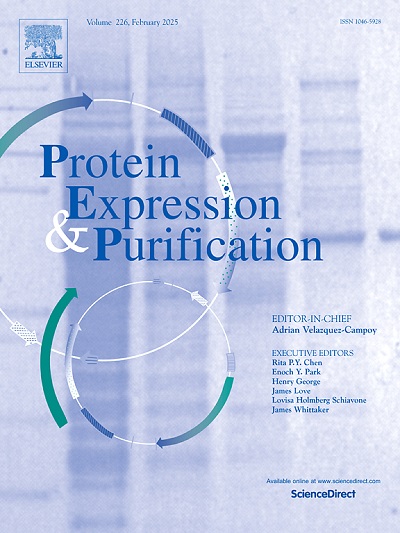Sartobind快速A蛋白A膜层析纯化双特异性抗体时半抗体副产物的有效和稳健分离。
IF 1.2
4区 生物学
Q4 BIOCHEMICAL RESEARCH METHODS
引用次数: 0
摘要
半抗体是与不对称双特异性抗体(bsAb)产生相关的常见副产物。我们之前证明了蛋白A柱层析可以有效地将这种副产物从bsAb产物中分离出来,因为这两个物种具有不同的结合价(半抗体和完整的bsAb分别含有一个和两个蛋白A结合位点)。具体来说,结合较弱的半抗体可以在洗脱目标bsAb之前通过适当的洗涤选择性地去除。然而,该洗涤步骤的性能对装载密度很敏感,使得该过程对收获滴度的变化不稳定。在目前的研究中,我们证明Sartobind Rapid A Protein A膜有效地将半抗体从大约16.5%(负载)降低到0.1%(洗脱液)。此外,使用蛋白A膜还可以避免负载密度变化对性能的影响,从而提高工艺稳健性。因此,对于需要去除半抗体的bsAb纯化,蛋白A膜是比基于树脂的蛋白A柱更好的选择。本文章由计算机程序翻译,如有差异,请以英文原文为准。
Effective and robust separation of half-antibody byproduct in bispecific antibody purification by Sartobind Rapid A Protein A membrane chromatography
Half-antibody is a common byproduct associated with the production of asymmetric bispecific antibody (bsAb). We previously demonstrated that Protein A column chromatography can effectively separate this byproduct from the bsAb product, as these two species exhibit different binding valencies (half-antibody and intact bsAb contain one and two Protein A binding sites, respectively). Specifically, half-antibody, which binds weaker, can be selectively removed by an appropriate wash prior to elution of the target bsAb. However, the performance of this wash step is sensitive to the loading density, making the process unrobust to variations in harvest titer. In the current study, we demonstrate that Sartobind Rapid A Protein A membrane effectively reduces half-antibody from approximately 16.5% (in the load) to 0.1% (in the eluate). In addition, using Protein A membrane also improves process robustness by avoiding the impact of loading density variation on performance. Thus, for bsAb purification where half-antibody removal is required, Protein A membrane is a better choice than resin-based Protein A column.
求助全文
通过发布文献求助,成功后即可免费获取论文全文。
去求助
来源期刊

Protein expression and purification
生物-生化研究方法
CiteScore
3.70
自引率
6.20%
发文量
120
审稿时长
32 days
期刊介绍:
Protein Expression and Purification is an international journal providing a forum for the dissemination of new information on protein expression, extraction, purification, characterization, and/or applications using conventional biochemical and/or modern molecular biological approaches and methods, which are of broad interest to the field. The journal does not typically publish repetitive examples of protein expression and purification involving standard, well-established, methods. However, exceptions might include studies on important and/or difficult to express and/or purify proteins and/or studies that include extensive protein characterization, which provide new, previously unpublished information.
 求助内容:
求助内容: 应助结果提醒方式:
应助结果提醒方式:


